Results 5,741 to 5,750 of 12095
Thread: Anandtech News
-
02-18-16, 06:47 AM #5741
Anandtech: SanDisk Ultra +Cloud 64GB + 64GB Flash Drive Review
USB flash drives (UFDs) are a dime a dozen in the current market. In order to stand out in the crowd, manufacturers have adopted a two-pronged approach. While one category is devoted to drives that provide maximum possible capacity in a minimal footprint, the other category aims at delivering the maximum possible performance at a reasonable cost. Usually, UFDs are worth a capsule review, since there is really not much to talk about other than performance / endurance and price. However, SanDisk has opted to go with a third strategy for one of their UFD product lines - bundling a 3-year cloud storage subscription along with a commodity USB 3.0 flash drive. Priced at $30, SanDisk's Ultra +Cloud 64GB (local) + 64GB (cloud) seems like a no-brainer purchase. This review will analyze various aspects of the cloud storage component and also go into the performance of the flash drive itself.
More...
-
02-18-16, 08:07 AM #5742
Anandtech: Seagate Begins to Ship 2.5-Inch, 7mm Thick 2 TB Mobile Hard Drives with SM
Seagate has started to ship its highest-capacity hard drives for notebooks. The new HDDs use shingled magnetic recording (SMR) technology with very high areal density as well as slimmed-down mechanics.
The new Seagate Mobile HDD 2 TB is the first hard drive to market in a 2.5-inch/7 mm form-factor with such extreme capacity. The hard drive is based on two 1 TB SMR platters running at 5400 RPM and features 128 MB of cache as well as SATA interface. The maximum sustainable transfer rate of the HDD is 100 MB/s, which is considerably lower than that of mainstream mobile hard drives (145 – 169 MB/s for Seagate’s own laptop HDDs). Seagate declares 13 ms average seek time for the hard drives. The new HDD weighs 3.17 oz (or 90 grams) and is aimed primarily at mobile computers or bulk cold storage, where you can arguably fit eight drives into a single 5.25-inch bay. Supermicro has an 88-bay 4U rack unit where each drive is hotswappable, though that fits a large PC in the rear; if hot-swappable isn't required, we could be looking at nearly 200+ per storage 4U rack with appropriate backplanes.
Three sets of drives will be on offer, in 1TB and 2TB models:
The SMR technology enables areal densities higher than 1 Tbit per square inch, but at the cost of performance. HDDs featuring shingled recording write new magnetic tracks that overlap part of the previously written tracks, which may slowdown writing since the architecture requires HDDs to rewrite adjacent tracks after any writing operation. In order to “hide” such peculiarities of SMR, Seagate has developed special firmware that ensures optimal writing performance. Part of the reason why Seagate installs a massive 128 MB cache on a 2 TB HDD is because the firmware needs it to store data from tracks that have to be overwritten. Alternatively, it is required to alter operating systems and software, which is not economically feasible.2TB 1TB Base Model ST2000LM007 ST1000LM035 Seagate Secure Model
(Self Encryption)ST2000LM009 ST1000LM037 Seagate Secure FIPS Model
(FIPS 140-2)ST2000LM010 ST1000LM038
Usage of SMR technology is justified in environments that are used to archive cold data that is not updated frequently because write performance of such HDDs may be rather slow. Client PCs both read and record data and it remains to be seen whether performance offered by SMR-based client HDDs will be sufficient for the end-user. The Seagate Mobile HDD 2 TB is around 60% slower than the Seagate Laptop HDD 2 TB based on maximum sustainable transfer rate.
Seagate did not disclose whether SMR platters used inside the Mobile HDD 2 TB are made in-house, or by Showa Denko K.K. (SDK), the world’s largest independent producer of hard drive platters. In addition to SMR technology, Seagate used its new mechanics, including new head, preamp, channel and other mechanisms for the Mobile HDD 2 TB HDD. Slimmed down mechanical components allowed Seagate to integrate two platters into a 7 mm hard drive.
Seagate did not reveal any information concerning pricing of its new HDDs. While the product is unique because of its form-factor and capacity, its performance is lower compared to other HDDs. It will be very interesting to see how Seagate prices its new HDD, given its pros and cons.
Related Reading
Seagate to Ship 5TB HDD in 2014 using SMR - Brief SMR Overview
Seagate Mobile HDD Specifications (1TB and 2TB) - Specifications
More...
-
02-18-16, 09:30 AM #5743
Anandtech: AMD and the Associated Press Team Up for Experimental 360° Video & VR News
This week AMD and Associated Press have announced a new collaborative project designed to fuel virtual reality journalism. Under the agreement, AP has created a special channel with 360° video and VR content, whereas AMD will provide the news agency appropriate hardware and software tools to create the content. The partnership could bring virtual reality closer to the masses.
The Associated Press news agency was established in 1846 by five newspapers from New York in a bid to share their costs of news coverage of the Mexican-American war. While AP is primarily known for its standards of accuracy, neutrality, and integrity, the organization was an early adopter of multiple emerging technologies to distribute news content. In 1899, the AP used radio to transmit the results of the America’s Cup yacht race; in 1935 the AP established the WirePhoto network, which transmitted news photographs over telephone lines; in the late 1980s, the AP helped to refine Kodak’s first digital cameras and began their usage; in 2006 the organization was among the first major news-outlets to join YouTube. Today, AP believes that 360° video and VR technologies could be the next big thing in journalism.
This week AP opened up its new 360° Videos and Virtual Reality channel to demonstrate what is possible to do using new technologies that essentially put viewers in the middle of the action, allowing them to experience an event from inside despite of physical barriers. By producing 360° and VR content, AP journalists will learn how to better use the new technologies and whether it makes sense to use them at all.
At present, the web site only contains 360° 2D videos and images that can be viewed using a compatible browser, a smartphone, or a VR headset with the help of the Ryot app (for Android or iOS). Eventually, AP’s 360° Videos and Virtual Reality channel will get 3D VR content developed and post-processed using AMD’s LiquidVR software development environment as well as Radeon or FirePro graphics cards. The channel itself is highly experimental, hence, content will be available across multiple platforms ranging from the Samsung Gear VR to the Oculus Rift and the HTC Vive. Right now, AP does not set any technical standards for its 360° videos and VR channel; there are no minimum requirements for resolution, level of details and so on. Many pieces of content will be available on all major platforms, but some will be limited to fully-fledged VR headsets (e.g., the Oculus Rift and the HTC Vive).
For AMD, AP’s 360° Videos and Virtual Reality channel is a way to promote its LiquidVR software as well as GCN GPUs. In addition, AMD will learn through real-world field testing how good its technologies are for VR content creation. If the channel becomes popular among early adopters of virtual reality headsets or among those, who will watch 360° videos using their mobile devices, AMD’s Radeon brand will gain some additional recognition.
360° video and VR technologies for news reporting and documentaries could useful on some occasions. For example, when you need to show excitement of the crowd at a major sport, political or product launch event. However, in many cases typical photos will just do their job for the vast majority of people. Moreover, if we are talking about VR for the masses, we need to keep in mind motion sickness sometimes caused by contemporary VR headsets, which is something that will limit adoption of the technology in general.
Finally, in their announcement the AP notes that their editors will have complete control over the editorial content presented via the new virtual reality channel, which means that we could see very creative way of using 360° video and VR technologies for journalism. Medium is a major thing in story telling. The VR360 channel from AP might just show whether virtual reality is the medium for next-generation journalism or not.
More...
-
02-18-16, 11:36 AM #5744
Anandtech: GIGABYTE Unveils New 990FX and 970-Gaming Motherboards for AMD FX
In the past week, GIGABYTE has introduced two new high-end motherboards for AMD FX microprocessors. The new platforms belong to GIGABYTE’s premium Gaming G1 product lineup and include the latest storage/IO technologies like USB 3.1 and M.2, but also upgraded components and advanced overclocking capabilities. Despite formal positioning, the new mainboards are pretty affordable.
AMD introduced the 32nm AMD FX processors, code-named Vishera and based on the Piledriver microarchitecture, back in late 2012. In 2013, the company released its FX 9000-series CPUs with increased clock-rates and TDP of up to 220 W designed for overclockers. To support the launch of ultra-high-end processors from AMD, makers of motherboards released their new platforms featuring enthusiast-class feature-set as well as robust voltage regulating modules (VRMs). Since then, AMD’s AM3+ platform has been ticking along while AMD has focused on the APU market. Because AMD’s current-gen chipsets for the FX processors were developed in 2009 – 2011, they do not natively support some of the latest standards such as PCIe 3.0, but aim to feature USB 3.1 and M.2 via PCIe lane based controllers. As a result, it can be a minefield when choosing motherboards for AMD FX processors that have up-to-date functionality. Even though there are new processors incoming from AMD over the next year, the company is not giving up its current FX platform just now and a number of its motherboard partners are releasing new models with current-generation features.
GIGABYTE decided to release not one, but two premium mainboards for AMD’s AM3+ processors: the GA-990FX-Gaming and the GA-970-Gaming based on the AMD 990FX+SB950 and the AMD 970+SB950 chipsets respectively. The GIGABYTE GA-990FX-Gaming will be the company’s flagship AM3+ product that will support all AMD FX CPUs (including the FX-9590 and the FX-9370 with 220W TDP) thanks to 10-phase VRM featuring solid-state chokes and 10K capacitors. The GIGABYTE GA-970-Gaming is designed for more mainstream CPUs up to 125W. Its five-phase power delivery will not support AMD FX-9000 chips, but will satisfy demands of all the rest AM3+ and AM3 processors, including the FX, the Phenom II, the Athlon II and the Sempron 100-series chips. Both motherboards are equipped with four memory slots and support up to 32 GB of DDR3-2133 memory.
The 990FX-Gaming features two PCIe 2.0 x16 slots and supports 2-way AMD CrossFireX as well as NVIDIA SLI multi-GPU technologies. The motherboard also has one PCIe 2.0 x16 slot running in x4 mode for an additional PCIe devices as well as three PCIe x1 slots. The 970-Gaming has one PCIe 2.0 x16 slot for PCIe adapters as well as two PCIe x1 slots and two PCI slots for add-in cards. In addition, the motherboard is equipped with one PCIe 2.0 x16 slot running in x4 mode and sharing bandwidth with the M.2 connector. If both slots are populated, they will run in PCIe 2.0 x2 mode.AMD 900 Series Chipsets 990FX + SB950
(990FX-Gaming)990X + SB950 970 + SB950
(970-Gaming)Code Name RD990 RD980 RX980 Released Q2 2011 Q2 2011 Q2 2011 PCIe Lanes 42 PCIe 2.0 lanes 26 PCIe 2.0 lanes 26 PCIe 2.0 lanes CrossFire x16 + x16
x8 + x8 + x8 + x8x8 + x8 x16 + x4
x8 + x8 + x4SLI x16 + x16
x16 + x8 + x8
x8 + x8 + x8 + x8x8 + x8 x8 + x8 NB TDP 19.6W 14W 13.6W HyperTransport (MHz) 2600 2600 2400 SATA 6 Gb/s 6 6 6 RAID 0, 1, 5, 10 0, 1, 5, 10 0, 1, 5, 10 USB 2.0 14 14 14 PCI Yes Yes Yes SB950 TDP 6W 6W 6W
Each motherboard features one M.2 slot (2242/2260/2280 form-factors are supported) operating in PCIe 2.0 x2 (the GA-970-Gaming) or PCIe 2.0 x4 modes (the GA-990FX-Gaming), providing 10 Gb/s or 20 Gb/s of bandwidth to PCIe M.2 SSDs. The motherboards fully support NVMe protocol and are compatible with both AHCI as well as NVMe SSDs. Just like other contemporary mainboards, the GA-990FX-Gaming and the GA-970-Gaming come with six SATA 6 Gbps ports for HDDs and SSDs (RAID 0, RAID 1, RAID 5, RAID 10, and JBOD are fully supported).
The mainboards are also equipped with the ASMedia ASM1142 controller that enables one USB 3.1 type-C and one USB 3.1 type-A connectors on the rear panel as well as the VIA VL805 chip that brings support for four USB 3.0 ports. AMD’s SB950 I/O controller supports up to 14 USB 2.0 ports, so, in addition to six high-speed USB implementations, there will be a plenty of ports to connect a mouse, a keyboard and other devices. Two of the ports even feature improved power circuitry to give cleaner power delivery to audio DACs if needed. In addition, the motherboards feature Rivet Networks' Killer E2201 gigabit LAN controller that can prioritize gaming traffic over other traffic in certain cases due to proprietary software.
Finally, GIGABYTE installed its AMP-UP advanced audio sub-system with EM shielding and PCB separation of analog/digital signal on its new mainboards for AMD processors. The AMP-UP is based on the Realtek ALC 1150 codec as well as a TI Burr Brown NE5532 operational amplifier.
Generally speaking, the GA-990FX-Gaming and the GA-970-Gaming motherboards from GIGABYTE attempt to bring the feature-set of AMD’s FX platforms as close to that of Intel’s Skylake platforms as it can be. Due to lack of PCI Express 3.0 support and limitations of AMD’s chipsets, it is impossible to offer M.2 slots with 32 Gb/s bandwidth (required for high-end SSDs), Thunderbolt 3 and some other technologies. Nonetheless, it makes a great sense for both GIGABYTE and AMD to roll-out motherboards with up-to-date functionality now. AMD’s FX-8000 chips with four Piledriver modules have appropriate performance for their price point, but they can be competitive with feature unlocked multipliers, thus enabling easy overclocking. The AMD FX CPUs can offer rather decent levels of performance when they run at high clock-rates as well.
GIGABYTE’s GA-970-Gaming is now available from Newegg for $99.99, whereas the GA-990FX-Gaming can be purchased for $139.99.
Gallery: GIGABYTE Unveils High-End Motherboards for AMD FX Microprocessors





Related Reading
AMD FX-8320E Review
AMD FX-8370E Review
AMD FX-9590 (220W) and ASRock 990FX Extreme9 Review
The Vishera Review: AMD FX-8350, FX-8320, FX-6300 and FX-4300 Tested
More...
-
02-19-16, 08:06 AM #5745
Anandtech: The GIGABYTE Z170X-UD5 TH Motherboard Review: An Entry to Thunderbolt 3
At the initial phase of Intel’s Skylake processor launch, a myriad of Z170 equipped motherboards were released to enable the platform. One of the prominent features of Z170 was the ability to support Thunderbolt 3 when the motherboard also used Intel’s Alpine Ridge Controller and was certified. GIGABYTE had the initial exclusive on the controller, but has had to wait for TB3 enabled devices to hit the market. While we’re still waiting, we tested the GIGABYTE Z170-UD5 TH motherboard, which comes in at $208 and is arguably one of the cheapest ways to get dual Thunderbolt 3 ports as standard.
More...
-
02-20-16, 01:01 PM #5746
Anandtech: Alcatel Launches The Idol 4 and Idol 4S At MWC
Today at MWC Alcatel unveiled the first phones in their new Idol 4 line. The Alcatel Idol 4 and 4S are successors to last year's Idol 3, and they come with some interesting new additions, including packaging that doubles as a VR headset of sorts to use with the phone. Naturally, both phones also feature some spec bumps and size changes from the 4.7" and 5.5" Idol 3 smartphones. You can see all the known specifications for the Idol 4 and 4S in the chart below.
On paper, both phones look like they'll be quite good if Alcatel is able to keep pricing within a reasonable range. If I were to make a guess, I would say that both phones are going to come in above the $250 price of the Idol 3, and the Idol 4S looks like it's really aimed at the higher mid range or even the pure high end market rather than the mid range. The Idol 4S is definitely the more interesting of the two, with Qualcomm's Snapdragon 652 SoC sporting four Cortex A72 cores in addition to four Cortex A53 cores, and being built on a 28nm HPm process rather than 28nm LP which has been used for most of Qualcomm's previous 400 and 600 series parts after the move to standard ARM cores.Alcatel Idol 4 Alcatel Idol 4SSoC Qualcomm Snapdragon 617
8 x Cortex A53Qualcomm Snapdragon 652
4 x 1.8GHz Cortex A72
4 x 1.4 GHz Cortex A53GPU Adreno 405 @ 550MHz Adreno 510 @ 550MHz RAM 3GB LPDDR3 NAND 16GB NAND + MicroSD 32GB NAND + MicroSD Display 5.2" 1920x1080 IPS LCD 5.5" 2560x1440 AMOLED Thickness / Mass 8.2mm / 142g Camera 13MP Rear-facing
8MP Front-facing16MP Rear-facing
8MP Front-facingBattery 2610mAh 3000mAh OS Android 6.0 Marshmallow Other Connectivity 802.11a/b/g/n/ac + BT 4.2, NFC, Micro-USB 2.0
Both phones have what look to be quite good displays, at least on paper. The Idol 4S is again the more interesting of the two, with a 5.5" 2560x1440 AMOLED display. It'll be interesting to see whether the display is properly calibrated like other recent AMOLED devices.
Beyond the display and SoC, both phones are very similar. The Idol 4S does take the rear camera from 13MP to 16MP, and it has a larger battery simply because it's a larger phone, but most everything else remains the same between the two. Something to note is that they're both launching with Android Marshmallow, which is greatly appreciated in a time where many phones somehow still launch with a version of Android that is around a year old.
In addition to being fairly good phones as far as specs on paper go, the Idol 4 and Idol 4S have one other interesting feature. Rather than being packaged in your standard cardboard box with some manuals and a charger, the phones come in a special case that is also a VR headset. Much like Samsung's Gear VR and Google Cardboard, you mount your phone inside and can use it for VR. The case looks to be much sturdier than something like Google Cardboard as well, and I'm definitely interested in giving it a try.
More...
-
-
-
02-21-16, 11:32 AM #5749
Anandtech: LG Announces the LG G5: 5.3-inch QHD with Snapdragon 820
Today just before the official beginning of Mobile World Congres 2016 we were happy to attend LG's G5 launch event. The G5 is the successor to last year's much acclaimed G4. The new devices from the Korean manufacturer marks a very large change in terms of design language and build material as we the G5 adopts a new metal body. In a sense the G5 is LG's transition to premium built smartphones. Before we get back to the build-quality, let's take a look at the spec sheet.
The G5 is powered by Qualcomm's new Snapdragon 820 SoC which contains a pair of Kryo cores clocked in at 2.15GHz and a pair clocked in at 1.59GHz. The Device comes with 4GB of LPDDR4 memory. In terms of storage LG now employs UFS storage and by default comes with 32GB of NAND - we're not sure if there are plans for larger capacity devices. The microSD has been retained and now is accessible via combined SIM/microSD slot on the bottom right side of the device.LG G Series Family LG G5 LG G4 SoC Snapdragon 820
2x Kryo @ 2.15GHz
2x Kryo @ 1.59GHz
Adreno 530 @ 650MHzMSM8992 Snapdragon 808
2xA57 @ 1.82GHz
4xA53 @ 1.44GHz
Adreno 418 @ 600MHzRAM 4GB LPDDR4 3GB LPDDR3 933MHz NAND 32GB NAND (UFS)
+ microSD32GB NAND (eMMC 5.0)
+ microSDDisplay 5.3-inch 2560x1440 IPS LCD 5.5-inch 2560x1440 IPS LCD Network Qualcomm X12 (Integrated)
2G / 3G / 4G LTE (Category 12/13)Qualcomm X10 (Integrated)
2G / 3G / 4G LTE (Category 6/9)Dimensions 149.4 x 73.9 x 7.7 mm
159 grams148.9 x 76.1 x 6.3 - 9.8 mm
155 gramsCamera Rear Camera #1
16MP Standard Angle (78°)
Rear Camera #2
8MP Wide Angle (135°)Rear Camera
16MP (Sony IMX234)
1.12µm pixels, 1/2.6" CMOS size
F/1.8, 3-axis OISFront Facing
8MPFront Facing
8MP Toshiba T4KA3 FFCBattery 2800 mAh (10.78 Wh)
Replaceable3000 mAh (11.4 Wh)
ReplaceableLaunch OS Android 6 with LG UX 5.0 Android 5.1 with LG UX 4.0 Connectivity 802.11a/b/g/n/ac 2x2 MU-MIMO +
BT 4.2,
USB 2.0 Type-C , GPS/GNSS, NFC
LG Modular Port802.11a/b/g/n/ac + BT 4.0,
USB 2.0, GPS/GNSS, Slimport, DLNA, NFCSIM Size ? MicroSIM Price ? ~649 USD retail (US, launch)
The device's design and ergonomics are astonishingly surprising and mark a very large departure from LG's past designs. For beginners, we see a reduction of the screen size back to 5.3" from the 5.5" on the G4. The screen is an IPS display with 1440p resolution but LG has visibly improved the panel as I noticed there are significant viewing angle improvements compared to the panel used on the G4. The G5 also now features an always-on mode which displays the current time and notifications. LG is able to get away with this on an LCD panel with help of a more efficienct DDIC and also local backlight illumination, meaning only part of the backlight works when the AOD is active. Furthermore LG claims the screen's brightness can reach up to 850 nits which is an astounding number - I wasn't able to verify this but the screen did seem pretty bright. Overall I was extremely impressed by the G5's screen.
The unibody design (almost unibody) of the G5 is what will be most noticed and praised as the G5's build quality rises dramatically in comparison to its predecessors. The alloy frame feels very solid and thanks to a good finish is also very grippy and comfortable to hold. The rounded edges give it a good in-hand feel and generally LG adopts a design-language with rounded features. At the top of the device we find the 3.5mm headphone jack along a IR blaster and top microphone. On the right side there's isn't much besides the bottom SIM/microSD tray. On the left side we find the volume rocker which no longer resides on the back of the device. At first I was surprised to find no power button on the phone but after closer look it's revealed that the fingerprint sensor now acts as a mechanical button, a pretty interesting and ergonomic combination of both features.
Of course one of the key defining features of the G5 is the fact that it's able to sport a removable battery all while maintaining a metal body. LG achieves this by having the whole bottom part of the phone be removable, acting as a cover to the battery which slides in. The whole mechanism was much more robust than I initially expected and has no jiggle-room whatsoever. It's also not possible to remove the slot by accident as it's held firmly in place and only opens up via a button on the left side of the device. The bottom housing contains the USB-C connector as well as the device's speakers. Both connect to the main body of the phone via proprietary connector next to the battery. It's worth mentioning that even without the battery in place the main body of the phone was well built and didn't give much in terms of flex.
Finally in terms of camera the G5 now sports a dual-sensor setup. The sensors arn't used for 3D or stereo vision but rather act as complements to each other. The main camera is a 16MP module with 78° viewing angles while the secondary unit is a 8MP module with an extremely large 135° FOV. Switching between the two units happens when one zooms in or out via the traditional pinch gesture in the camera app. Although the picture quality transition seemed seamless, there was a noticeable delay of 1-2 seconds until the viewfinder switched to the other camera. Both modules seems to employ OIS. I wasn't able to find out what sensor modules were used and if they represent an improvement to last year's G4 module.
On the software side LG seems to have completely revamped its UI as it's now a visibly cleaner and less cluttered interface. The colour scheme is much brighter and icon scheme seems more attractive compared to what was found on the G4. I wasn't able to test much in terms of the performance as the display units didn't seem to allow installtion of third-party apps but it seemed fast although the default animations were relatively slow. A few browser benchmarks put the Snapdragon 820 at the same levels as what the MDP was able to achieve in Chrome, which means that LG doesn't seem to have been able to optimize the browser for the chipset. I was playing around with one of the units connected to the VR headset and the device became noticeably hot after some period of use and watching 3D videos which was a relatively worrying observation although we can't come to any conclusion before we're able to perform a full review of the device.
Overall I was pretty impressed by the G5 and what LG was able to achive this generation. The G5 is able to improve on its ergonomics and premium feel all without sacrificing any of the much wanted features such as a removable battery and microSD slot. It remains to be seen how the Snapdragon 820 and the screeen efficiency end up in terms of battery longevity as the 2800mAh battery does represent a regression over the G4's 3000mAh battery. The dual-camera design is in my opinion a smart use of multiple modules and avoids more gimmicky use-cases such as stereo vision or all-focus pictures, keeping it simple by simply taking advantage of the second module as a wide-angle camera for capturing more scenery.
More...
-
02-21-16, 11:32 AM #5750
Anandtech: HP Announces The Elite x3 Windows 10 Mobile Powered Smartphone
Windows Phone has had a rough go of it of late. Microsoft first purchased, and then basically shuttered, Nokia’s smartphone division. Instead they wanted to back out of the market and allow their partners be the ones to showcase devices. Windows 10 Mobile has brought the same underpinnings of Windows 10 to the smartphone space, as well as the promise of Universal Windows Platform (UWP) apps which can run on both the desktop and mobile devices.
One of the interesting features that came out of Windows 10 Mobile though is Continuum. On the desktop, Continuum allows the device to be switched into a touch first mode, for use on 2-in-1 devices, but on the Windows 10 Mobile side it kind of does the opposite. You can plug a sufficiently powerful Windows 10 Mobile smartphone into a docking station, and use it as a more traditional PC.
While this is an interesting endeavour, on the consumer side I can’t see this being a hugely practical situation, although there certainly could be use cases where you could see this being useful. The one market where Continuum could be very successful though is in business. You can see a scenario where you have sales reps who travel a lot, and rather than having to bring a laptop with them or keep cubicles with desktops for them to use in the office, you could instead have them just dock their phone and get to work.
That’s pretty much the idea that HP has come up with, and they are showcasing Windows 10 Mobile as the operating system of choice to get this done. We’ve seen some of this in the past, but the level of execution here due to updates to Windows 10 and the UWP mean that it’s finally a scenario that you can envision working.
Let’s start with the handset. Just recently Microsoft released the Lumia 650 as a “business” focused phone, and while I suppose you could market anything as a business device, the 650 lacks both Windows Hello and Continuum, both of which would likely be strong selling points in the market. HP has decided to not only make a phone targeted towards business, but the Elite x3 is a true hero phone for Windows 10 Mobile. This phone literally has everything you could think of, and then more. Let’s go over the basics.
The HP Elite x3 is a phablet, coming in with a 5.96-inch WQHD AMOLED display with Corning Gorilla Glass 4 to protect it. It has a graphite exterior with Bang & Olufsen stereo front facing speakers, and three integrated noise cancelling microphones. The rear camera is a 16 MP shooter, and the front camera is an 8 MP camera with Iris scanning capabilities for Windows Hello. In addition, although the current incarnation doesn’t have it yet, the final shipping version should also have a fingerprint sensor on the back. The bottom has a USB-C connector for charging and Continuum. The body is 7.8 mm thick and weighs 195 grams, and it is IP 67 rated and designed to pass MIL-STD 810G testing.HP Elite x3 SoC Snapdragon 820 (quad-core Kyro @ 2.15 GHz) RAM/NAND 4 GB LPDDR4 RAM, 64 GB eMMC 5.1 NAND + microSD 2 TB Display 5.96” 2560x1440 AMOLED Corning Gorilla Glass 4 Network LTE-A Dimensions 161.8 x 83.5 x 7.8 (mm) 6.36 x 3.29 x 0.31 (in) Weight 195 grams 0.43 lb Rear Camera 16 MP, LED Flash Front Camera 8 MP wide angle, Iris Camera Battery 4150 mAh, 3.85 V, 15.9 Wh OS Windows 10 Mobile Connectivity 2x2 802.11ac + BT 4.0 LE, USB-C Additional Windows Hello (Iris and Fingerprint), FIPS 140-2, fTPM 2.0, IP67 SIM Size Dual nano SIM or SIM plus microSD
Powering the Elite x3 is a quad-core Snapdragon 820, which is the Kyro based processor set to replace the not well loved A57 based Snapdragon 810. This is Qualcomm’s first custom chip design based on 64-bit ARM. Qualcomm was the chip company to beat when their 32-bit Krait chips were around, and although the switch to 64-bit was a rough one, we will finally be able to see a proper FinFET based custom design. The Snapdragon 820 also features Adreno 530 graphics. RAM should not be an issue, with the Elite x3 sporting 4 GB of LPDDR4. Storage will be ample, with 64 GB of eMMC 5.1 as the onboard storage, and you can add another 2 TB of storage over micro SD. It also has 2x2 802.11ac wireless, NFC, and Dual nano SIMs, or nano SIM + micro SD with an adapter.
Because this is targeted towards enterprise, there are some additional requirements. The Elite x3 includes dual biometrics (Iris and Fingerprint as stated earlier) and is FIPS 140-2 certified, with Secure Boot, full disk encryption with a 256-bit key, fTPM 2.0, Bitlocker, and VPN.
As a smartphone, HP has basically covered everything they could possibly think of.
Now for the cool part. Since the phone supports Continuum, HP is also including a docking station. This is a typical Continuum dock, and the phone sits in the dock which is powered by a USB-C cable, and offers Ethernet, two USB ports, and DisplayPort. Put this on a desk, and hook a keyboard, mouse, and monitor up to it, and you can have your mobile workers come in with just their phones, and they can plug them in and get to work.
But HP has also though beyond this scenario. What about the mobile worker who generally has a phone and a laptop? Sure we’ve seen the dockable phone before in the Motorola Atrix but that was a long way from what is possible with Continuum. Since Continuum is built into the operating system, a lot less magic is needed from the OEM to make something like this work. HP will be offering the HP Mobile Extender, which is a laptop with no processing power. It is instead just a battery shell which offers some I/O. It is a 12.5-inch 1920x1080 laptop, with integrated Bang & Olufsen stero speakers. It has a USB-C connector to hook the phone up to, and it has two more USB-C ports for I/O and power in and out, along with a micro HDMI jack. The keyboard is a spill-resistant model with a drain and backlighting.

The laptop is only 13.8 mm thick (0.54-inches) and weighs only 1 kg (2.2 lbs) and it houses the 46.5 Wh battery. The battery can be used to charge the phone while its docked, as well as run the display. There is no runtime listed, but a battery that size should be able to run a smartphone for a long time, as well as whatever is required to run the display.
All of this is centered on Continuum. As mentioned earlier, Continuum allows you to run your phone as a desktop PC, but the app selection is restricted to UWP apps which support Continuum. At the moment, that isn’t a huge selection, and you can’t natively run any Win32 apps. HP has a solution for this too, which is HP Workspace, whichi is an app catalog to let you access virtualized apps. App virtualization is not a new technology, so HP will leverage HP Workspace to use this existing tech and stream business apps to the phone. This is already a popular solution in business to get line of business apps out to mobile devices like tablets and phones, and HP’s version has full support for Continuum.
HP’s Elite x3 is certainly a bold step forward for the company. It is embracing new Microsoft technologies much like they have in the past with the Windows Media Center PCs and Windows Home Servers over the years. This new offering is certainly compelling in the fact that they have some great looking hardware, with a focus on enterprise and solutions for business workers. Make no mistake. This phone is not going to upset the balance of power, or raise Windows 10 Mobile’s marketshare into the double digits, but HP needs to do neither of those to be successful. This is a package focused on enterprise, and the components are centered around services like their App virtualization which will generate income for HP based on subscriptions.
HP doesn’t even have a price yet for the phone, and it will not ship until August. Although this may change, at the moment HP is going to sell the phone through their channels into business, so this phone is unlikely to find its way into consumers hands any time soon. But that’s actually fine. Microsoft’s big play in mobile has always been the enterprise, but it’s the one that that they seem to have ignored for the last five years. In the right context, this is a pretty interesting device.
Source: HP
More...
Thread Information
Users Browsing this Thread
There are currently 7 users browsing this thread. (0 members and 7 guests)





 Quote
Quote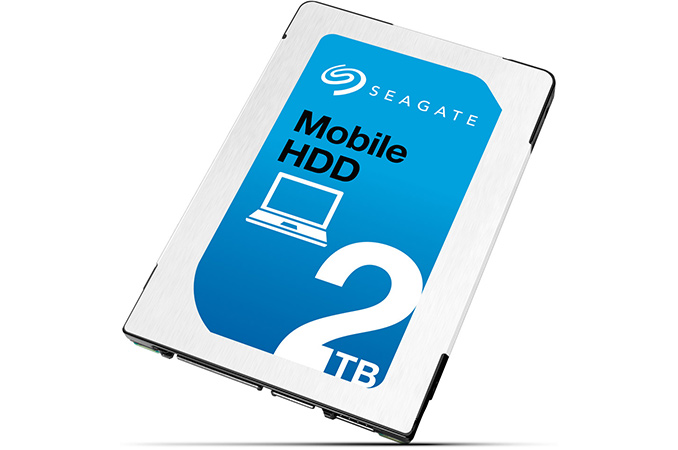

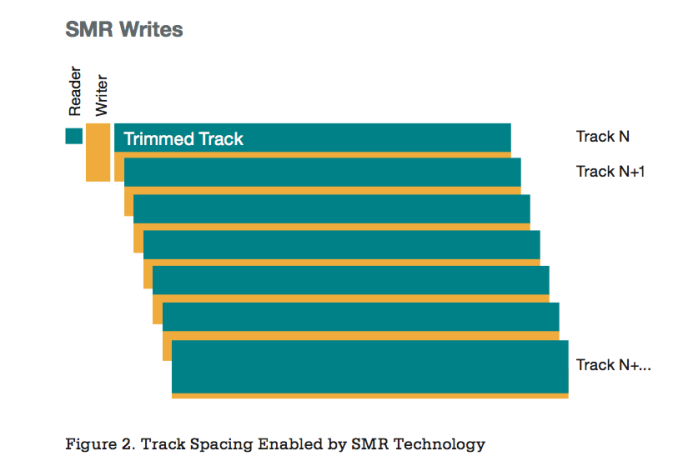
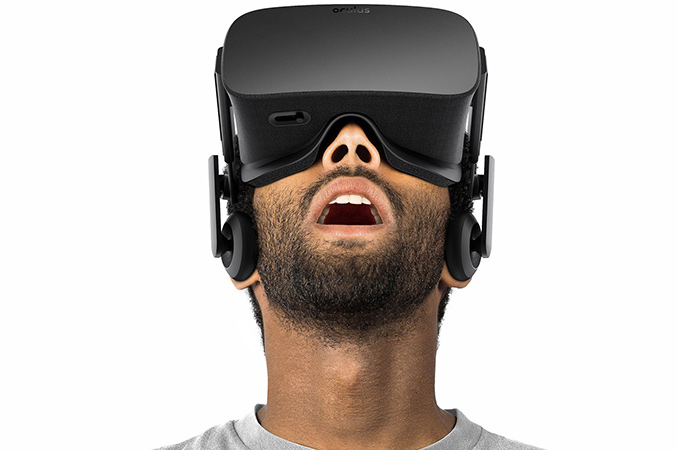

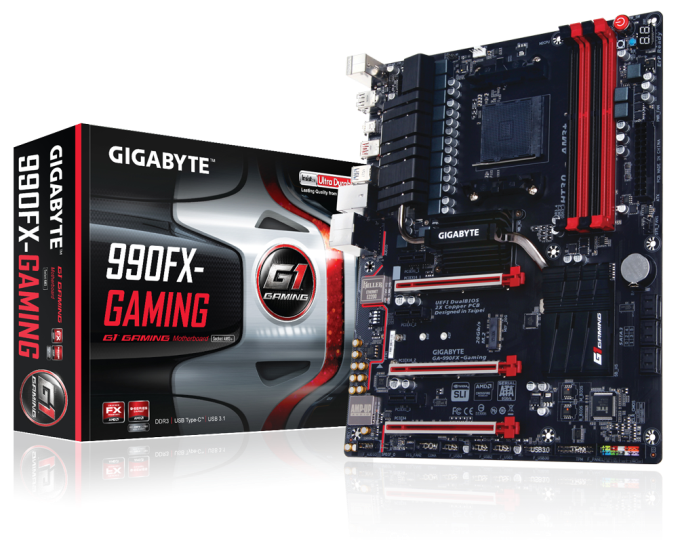




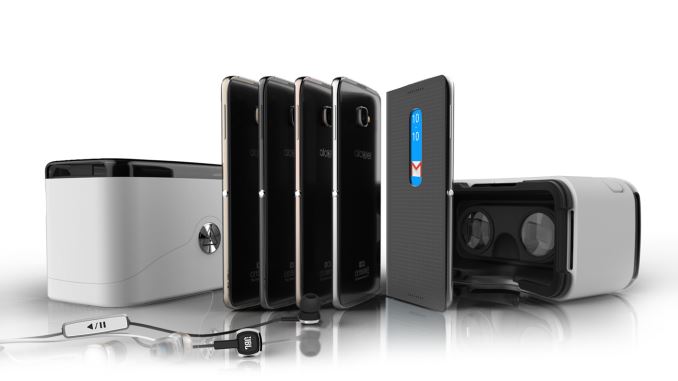
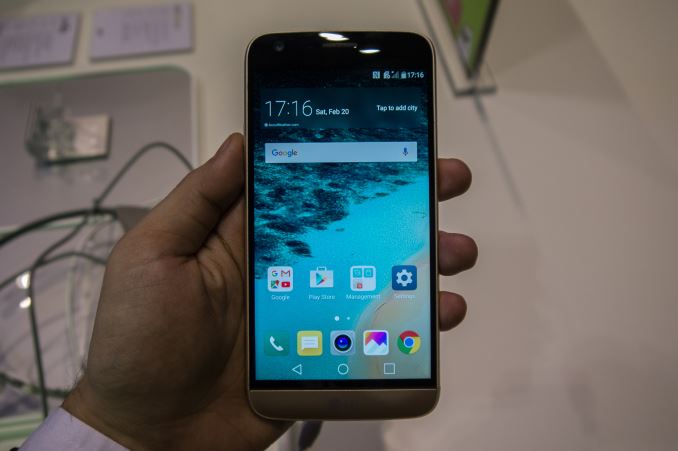
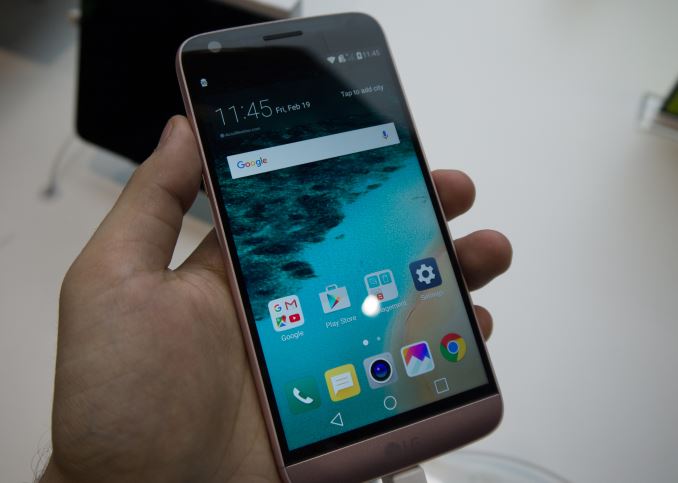


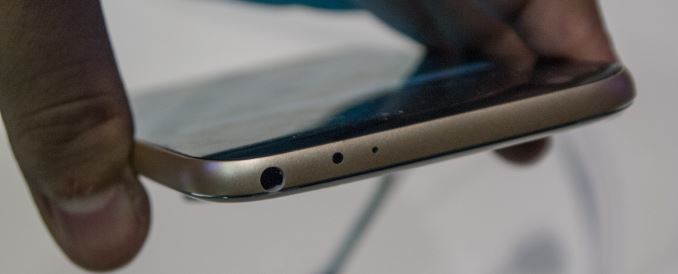

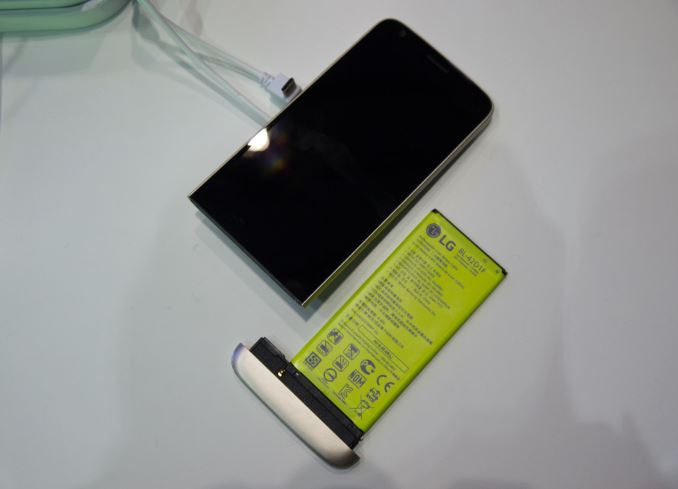
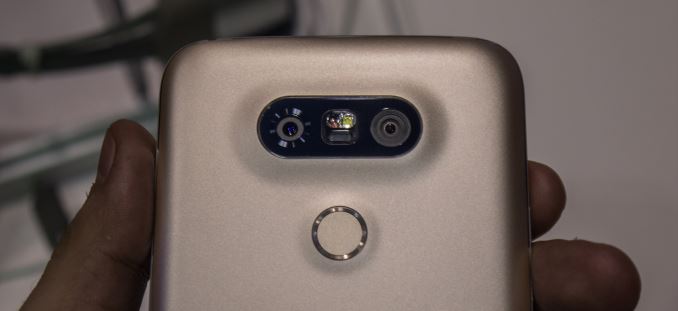
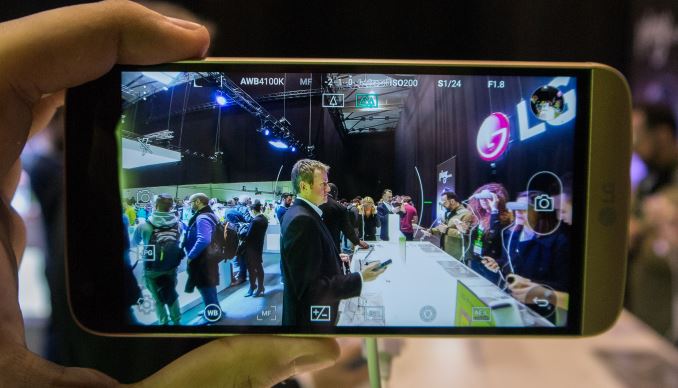



















Bookmarks